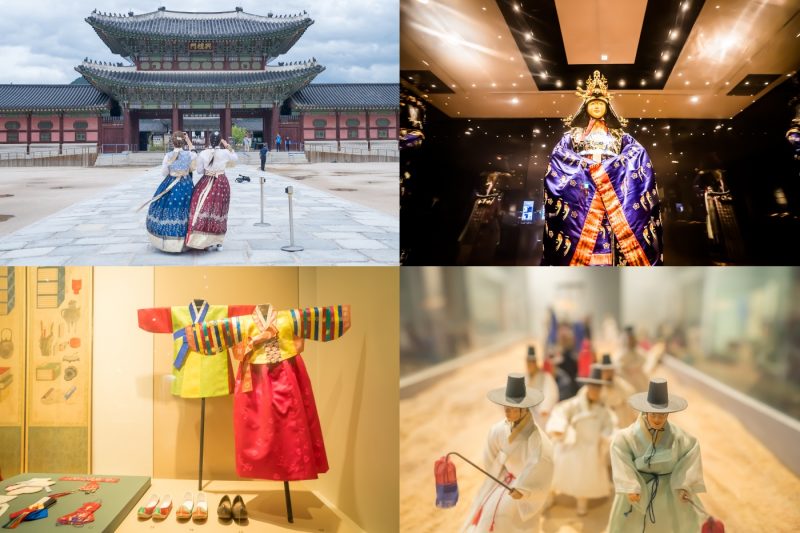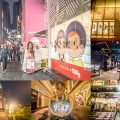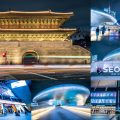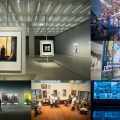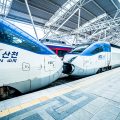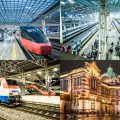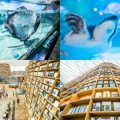[Introduction]
I traveled to Seoul, South Korea, in early September. Although I was not blessed with weather at all, I enjoyed the trip as the food was delicious and people were kind. In this article, I will write about Gyeongbokgung Palace as part of Day 3. Unfortunately, I was not able to enjoy “Gyeongbokgung Palace” so much due to a typhoon, but “National Palace Museum of Korea” and “National Folk Museum of Korea”, to which I made unscheduled visits, were more interesting than I expected.
[Visit Places (series of articles)]
* Day 1: Fly to Gimpo International Airport
* Day 1: Myeong-dong
* Day 1: Myeong-dong (Light-up)
* Day 2: National Museum of Korea
* Day 2: War Memorial of Korea
* Day 2: Dongdaemun
* Day 2: Dongdaemun (Light-up)
* Day 3: Gyeongbokgung Palace [This Article]
* Day 3: National Museum of Modern and Contemporary Art etc.
* Day 3: Seoul Station
* Day 3: Seoul Station (Light-up)
* Day 4: Coex Aquarium and Starfield Library
* Day 4: Lotte World
* Day 4: Lotte World (Light-up)
* Day 5: Paradise City
* Day 5: Return Home from Incheon Airport & Stay Overnight at Narita Airport
[Travel Date]
2018.09.05-09
[Main Part]
Sejong Ganjang Gejang
It was the third day of my South Korea Seoul trip. As breakfast was not included in my accommodation, I will have breakfast outside.
Fortunately, there were several restaurants that were open in the early morning around the hotel (Sejong Hotel), and I visited “Sejong Ganjang Gejang”.
A typhoon was approaching Seoul on the third day, and it was discussed in a TV program.
Appetizers.
As the name of the restaurant suggests, “Ganjang Gejang” (salted fermented raw crabs) was the signature dish of the restaurant, but it was relatively expensive, so I ordered “Samgyetang” instead.
Gwanghwamun Plaza
While I was worried about the typhoon, I tentatively decided to go around spots as planned. My strolling started from “Gwanghwamun Plaza”.
“Gwanghwamun Plaza” is a square on the south of “Gyeongbokgung Palace”, which I will visit later.
The statue of Sejong the Great, the fourth king of the Joseon dynasty.
I felt a little bit nervous to see there were several guardsmen around the statue, but it was OK to take snap photos.
Gyeongbokgung Palace
I moved “Gwanghwamun Plaza” north and came to “Gyeongbokgung Palace”. The photo was taken in front of “Gwanghwamun Gate”, the main gate of “Gyeongbokgung Palace”.
“Gyeongbokgung Palace” is the main royal palace of the Joseon dynasty built in 1395. With the establishment of the Republic of Korea in 1948, the site contains the president’s residence.
If visitors wear “Hanbok” (traditional Korean dress), they are exempt from entrance fee, so I saw lots of visitors with “Hanbok”.
In addition, it seemed there were tours to visit “Gyeongbokgung Palace” with “Hanbok”.
The building over the pond was “Gyeonghoeru Pavilion”.
“Gyeonghoeru Pavilion” is a hall used to hold important and special state banquets during the Joseon Dynasty.
The royal changing of the guard ceremony will be held in front of the main gate from 10 a.m., so I returned toward “Gwanghwamun Gate”.
“Geunjeongjeon” is the throne hall. As yon can see, the wind became stronger.
Lots of visitors gathered to see the royal changing of the guard ceremony.
However, the gate of “Geunjeongjeon” was suddenly closed and visitors were asked to go out of the premise. Then, there was an announcement indicating the facility will be closed soon as the typhoon is approaching with strong winds.
I expected the royal changing of the guard ceremony, but I couldn’t watch it 🙁
National Palace Museum of Korea
Originally, I planed to go around old palaces in Seoul including “Gyeongbokgung Palace”, “Changdeokgung” and “Jongmyo Shrine”. Now “Gyeongbokgung Palace” was closed, I doubted whether the other two sites were still operating, so I decided not to visit them.
As the typhoon was predicted in advance, I switched to “Plan B” – go around museums around “Gyeongbokgung Palace”. To begin with, I visited “National Palace Museum of Korea”, which was located in the site of “Gyeongbokgung Palace”.
“National Palace Museum of Korea” is a museum that houses over 40,000 artifacts and royal treasures, from the palaces of the Joseon Dynasty and the Korean Empire. It displays records, state rites, architecture, clothing, royal life, education, culture, paintings and music of the dynasty’s ruling era.
Here are some snaps.
Korean traditional outfits were different from those of Japanese and Chinese, which was interesting to me.
Good lighting made the outfit more gorgeous.
Cars used for royal families during Japanese ruling era were also exhibited.
Other items included ceramics, and
books etc.
The exhibit on the left was used to carry emperors at that time.
Then, I left “National Palace Museum of Korea”.
Tosokchon Samgyetang
I left “Gyeongbokgung Palace” for the time being to have lunch around here.
I visited “Tosokchon Samgyetang” for lunch.
In the restaurant.
“Tosokchon Samgyetang” is famous for its Samgyetang, so I ordered it.
National Folk Museum of Korea
There was another museum, “National Folk Museum of Korea”, within the premises of “Gyeongbokgung Palace”, so I will visit it as well. As all the gates of “Gyeongbokgung Palace” were already closed, I needed to take a detour.
A lot of visitors took photos in front of “Gwanghwamun Gate”, though the gate was closed.
I came to “National Folk Museum of Korea”.
“National Folk Museum of Korea” houses 86,000 collections and consists of three main exhibition halls – “History of Korean People”, “Korean Way of Life” and “Life Cycle of the Koreans”.
Here are some snaps.
While “National Palace Museum of Korea” owns mainly royal treasures, “National Folk Museum of Korea” shows ordinary lives.
These were called “Doljanchi”, a Korean tradition that celebrates the first birthday of a baby.
Miniatures.
Portable shrine.
Then, I will continue to go around museums.
[Closing]
That’s it for the article about Gyeongbokgung Palace as part of Day 3.
Unfortunately, I was not able to enjoy “Gyeongbokgung Palace” so much, but “National Palace Museum of Korea” and “National Folk Museum of Korea”, to which I made unscheduled visits, were more interesting than I expected. If I have another chance to visit Seoul, I would like to watch the royal changing of the guard ceremony in “Gyeongbokgung Palace” 🙂
In the next article, I will write about National Museum of Modern and Contemporary Art etc. as part of Day 3.
[Map]
1. Sejong Ganjang Gejang
2. Gwanghwamun Plaza
3. Gyeongbokgung Palace
4. National Palace Museum of Korea
5. Tosokchon Samgyetang
6. National Folk Museum of Korea
[Related Link]
Visit Seoul – The Official Travel Guide to Seoul
Gyeongbokgung Palace
Tosokchon Samgyetang
National Folk Museum of Korea
I would appreciate it if you could share my article via the following SNS buttons.

